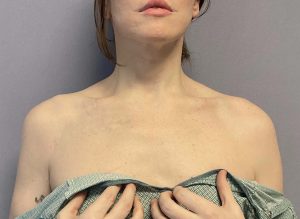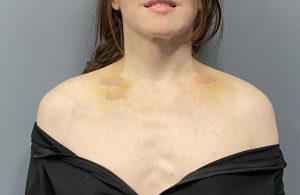Background: The collarbones are very visible in both male and females but little regard is paid to their actual shape and size. The size of the clavicles is typically perceived as how prominent they are but that is not a reflection of their actual length and thicknesses. Rather that is a function more of how thick the overlying soft tissues are and the patient’s body habitus.
The length and cross-sectional thickness of the clavicles is well known to be influenced by patient size and gender. The taller the patient is the longer the clavicle is. The larger the body habitus the thicker or increased cross-sectional diameter it has. There is some correlation between height and cross-sectional thickness but is more related to gender and body size. The cross-sectional thickness of the bone is important as the screw lengths used need to fully engage the cortex on both sides of the bone.
When performing shoulder narrowing surgery, regardless of the length of bone removed, the two reapposed ends are never similar in cross-sectional diameter. The outer segment is always about 1/3 smaller than the inner segment. This is because of the location of resection. Being done closure to the inner third of the clavicle due to the more favorable incision location, the inner segment is at the thickest part of the bone. With the removal of a mid-shaft segment of bone the thinner outer segment is pulled to the inner segment resulting in the size differences across the osteotomy site.
Case Study: This female desired shoulder narrowing surgery with a bideltoid distance of 52.5cms. Her clavicle length from sterno-clavicular joint head to the acromioclavicular joint was 17.75cms.
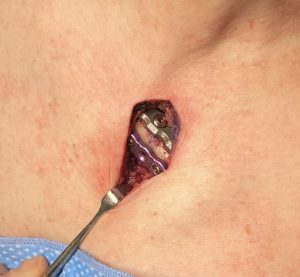
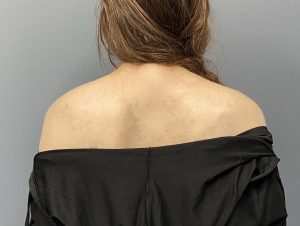
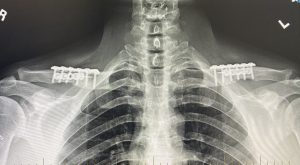

Key Points:
1) Large clavicles can be as successfully reduced as well as smaller clavicles and require slightly longer lengths of resection to do so.
2) The larger the clavicle is in cross-sectional diameter the longer the bicortical screws need to be on the superior plate.
3) Cross-sectional size differences between the reappposed bone ends will always occur regardless of the original size of the clavicles or the amount of bone removed.
Dr. Barry Eppley
World-Renowned Plastic Surgeon



